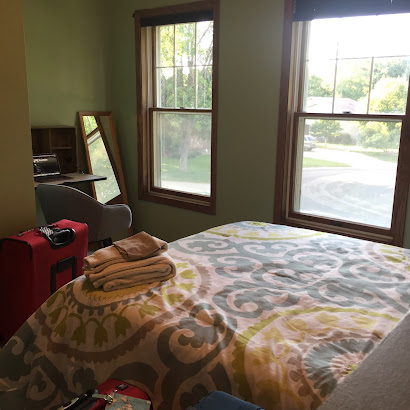(I wrote these thoughts for a BFA newsletter last fall, but I'm reflecting on them again in my new surroundings. Enjoy.)

Psalm 84:1-2, 5
“How lovely is your dwelling place, Lord Almighty! My soul yearns, even faints, for the courts of the Lord; my heart and my flesh cry out for the living God. Blessed are those whose strength is in you, whose hearts are set on pilgrimage.”
If you know me semi-well, you know I"m obsessed with pilgrimages. In the summer of 2018, I had the opportunity to go on pilgrimage with a BFA colleague. The trail across northern Spain, the Camino to Santiago de Compostela, is a 800-km (500-mile) medieval path with historical and spiritual significance, even for a Protestant like me who doesn’t believe in the necessity of relics or indulgences. I’ll spare you the stories of blistered feet and mountain highs; instead I want to focus on two words I learned on the very first day of walking: ultreia and suseia.
Immediately when you start walking the Camino, people greet you with the standard “Buen Camino” everywhere you turn. However, back in the 1200’s, when Latin was still wide-spread as the language of the Church, the more common greeting was “Ultreia,” which translates to “onward” or “further” or “beyond.” When said to a pilgrim, it was meant as an encouragement to not give up, but to keep pushing on until one reached the desired destination, whether Santiago or some other goal. Upon hearing this cheerful greeting, the pilgrim response was to answer with “et Suseia,” which means “and upward.” Put together, the greeting becomes “onward and upward,” or - if you prefer the version of Farsight the Eagle, Jewel the Unicorn, and Reepicheep the Mouse - “further up and further in!” (C.S. Lewis, The Last Battle). It was a much richer, deeper encouragement over “Buen Camino,” not the least of which in that it was a call-response; it requires both parties to engage in the greeting.
What Ultreia and Suseia call to mind is that while a pilgrimage may be an external, physical journey, its ultimate purpose is one of internal, spiritual growth. I may have ended my month-long Camino in the city of Santiago, but the true mark of a pilgrim is to end up in the courts of the Lord, God’s dwelling place, as the Psalmist reminds us. According to Adele Ahlberg Calhoun, the author of Spiritual Disciplines Handbook, a pilgrimage should result in the deeper sense of being a stranger on this planet, a sojourner merely passing through.
Now I grant that it isn’t possible for us to daily leave our desks, classrooms, or dorms and walk pilgrimages. And yet, since finishing one, I’ve become more mindful of the connection that does exist between physically setting myself up well and sitting in God’s presence regularly. My ultreia might be the trek to Ikea to purchase a TV tray so that my Bible, candle, and coffee coaster are within easier reach of my favorite gray chair every morning. Ultreia could be the mindful journey from my office to the classroom knowing I will encounter 15 8th graders who all bear the image of God. Ultreia is evident when someone goes out of his or her way to speak about Jesus to a fellow pilgrim so as to encourage both hearts upward. What is your “further in” so that you will be more prone to look “further up” as well?
The last thing I want to do is promote legalism or a works-based theology, saying we need to do anything to earn access into God’s presence. Never! But if I took away anything from my Camino, it’s that setting physical reminders to draw my attention heavenward and to remind me that I’m always in God’s presence … works. The yearning of my soul for the living God, whether I stop to recognize that’s what it is or not, finds its fulfillment in suseia, in recalling that with him is my home. He is the goal of our earthly pilgrimage, and in his graciousness, he gives us abundantly of himself even now. No wonder the psalmist calls the pilgrim blessed.


Matt Gilman has a song based on Psalms 42 and 84. Click here to hear it.










